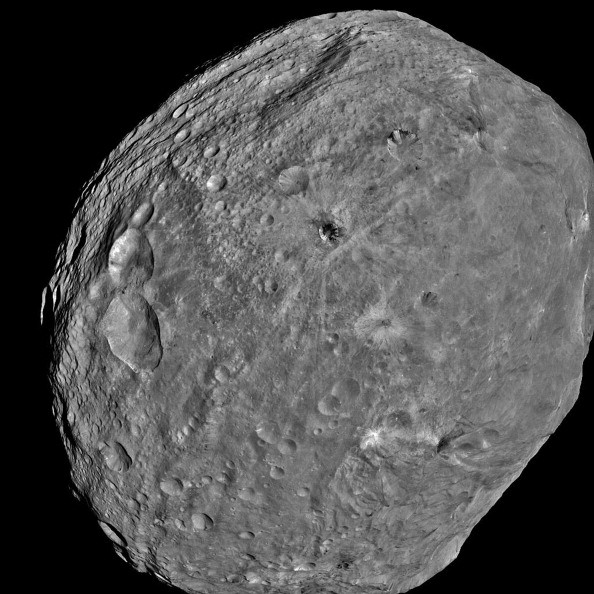The asteroid JF1 had previously been on the European Space Agency's Near-Earth Objects Coordination Center's list of major risks, but it was removed from the top ten in February.
It was previously assumed that it had a 1 in 4,000 probability of colliding with the planet during a near visit in May, but fresh data has reduced that danger to 1 in 1,700,000.
The asteroid that will pass earth
 (Photo : NASA/JPL-Caltec via Getty Images)
(Photo : NASA/JPL-Caltec via Getty Images)

As the name implies, asteroid 2009 JF1 was discovered in 2009, but researchers lost sight of it and were unable to determine its orbital path or how near it would approach Earth.
Asteroid orbit determination tools have improved since then, and a new look at existing data has brought the asteroid's risk level into focus.
According to the ESA, "the asteroid has now lost its prominence on our danger list, and is relegated together with other more routine objects that represent a minor hazard," as per CNET.
The asteroid is predicted to be 33 feet (10 meters) in diameter or roughly the size of a school bus. The ESA even labeled a potential impact as "not of substantial concern."
To put the asteroid's proximity to Earth into context, the Asteroid Miss Information Twitter account converted its distance from Earth into other ones.
As a result, you could squeeze 898 moons between us and the asteroid.
The asteroid menace is not a figment of one's imagination.
Although there have been big hits in the past, there is no reason to be concerned about every space pebble that goes through the area.
As CNET's Eric Mack argues, it's generally not the ones in the news that we should be concerned about.
That is why astronomers are concentrating their efforts on discovering and detecting new objects, as well as developing planetary protection missions.
You are welcome to just wave when asteroid 2009 JF1 passes safely by later this week.
Also Read: Asteroid Impact: NASA Estimates Space Rock the Size of the Great Pyramid May Hit Earth on May 6
The discovery of the asteroid
As per a statement from the European Space Agency, the 230-foot-wide (70-meter) asteroid 2022 EA1 was spotted on Jan. 7 and alarmed space defenders since it looked to be on course to smash our planet on July 4, 2023, too soon to launch a deflection mission (ESA).
In January of this year, they were alerted of an asteroid with the highest Palermo scale ranking in more than a decade, reaching -0.66, according to Marco Micheli, an astrophysicist at ESA's Near-Earth Object Coordination Center (NEOCC) in Italy.
The Palermo scale assesses the risk presented by near-Earth asteroids depending on the chance of impact and the estimated force.
Experts predict that an asteroid the size of 2022 EA1 would destroy a city of the same magnitude as the nuclear bomb detonated on the Japanese town of Hiroshima at the conclusion of World War II.
Orbit calculations performed by the NEOCC team in the first week following the asteroid's discovery, as well as data from NASA's Jet Propulsion Laboratory, initially showed a growing impact danger.
The asteroid then vanished from scientists' sight for a week due to the brilliant glare of the full moon.
When EA1 resurfaced in 2022, further measurements altered the calculations, finally demonstrating that space rock will escape our planet, traveling at a safe distance of around 6.2 million miles (10 million kilometers).
According to the ESA, this is more than 20 times the distance to the moon.
Related article: Gigantic Asteroid Will Pass By Earth in 7 Years, Do We Have Defense Against Such Threats?
© 2024 NatureWorldNews.com All rights reserved. Do not reproduce without permission.

![Tsunami Hazard Zones: New US Map Shows Places at Risk of Flooding and Tsunamis Amid Rising Sea Levels [NOAA]](https://1471793142.rsc.cdn77.org/data/thumbs/full/70325/280/157/50/40/tsunami-hazard-zones-new-us-map-shows-places-at-risk-of-flooding-and-tsunamis-amid-rising-sea-levels-noaa.jpg)



